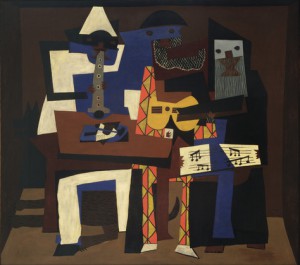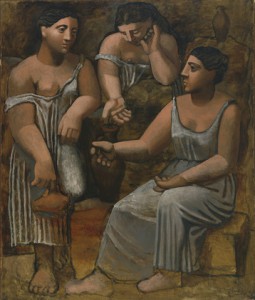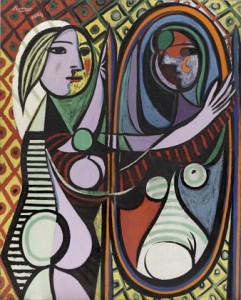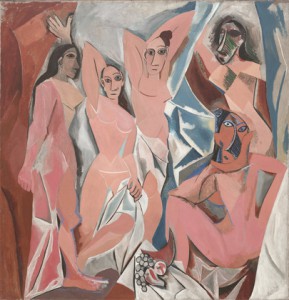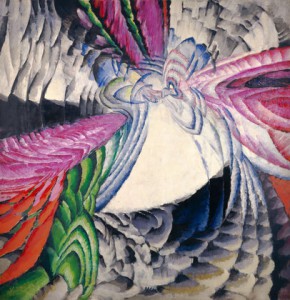I was at MoMA yesterday with some out-of-town guests and every other New Yorker with his out-of town guests, when suddenly I found myself on a Picasso hunt. It was right after I enjoyed a wonderful cheese-based lunch in the 5th floor cafe, which came right after I visited Andrew Wyeth’s Christina’s World and Balthus’ The Street while waiting for our table to be called.
I may have mentioned before that I get lost in museums. You can hand me a map, but unless I walk around with my nose in it, using a highlighter, I’m still going to get lost. So it was that at last I found myself facing Picasso’s Three Musicians on one side of a doorway, and his Three Women at the Spring on the other side.
Most artists are lucky and talented if they can do one thing well. My best thing is actually traditional sculpture, but it exacerbates arthritis in my right thumb to work in clay, so I mostly do my second best thing, which is draw. Looking at Picasso’s two works I was stunned by his range and his bravery at trying new forms of expression. The important thing to remember is that no matter how arrogant he seemed, he couldn’t know that these paintings would work while he was making them. That’s the bravery part. And his limitless imagination encouraged him to start new phases over and over again during his long life.
The next Picasso I found is one of my favorites (because of the color): Girl Before a Mirror. Then quickly I ran into Seated Bather, one of the scariest. I started to hunt Les Demoiselles d’Avignon, perhaps his most famous painting, but never did find it. Remember: lost!
I used to say that I admired Picasso but wouldn’t want to live with most of his paintings. After yesterday I think I would like to live with all of his paintings. I could admire the genius and forget the misogyny. And I haven’t even mentioned Guernica. It is one of my mantras that no one can make anyone else’s art. It is too personal. There will never be another Picasso.
Here’s the quiz. Can you look at the five paintings shown here and tell in which order they were painted? Answers are below, but don’t peek yet.
Don’t peek.
Don’t peek.
Don’t peek.
Okay:
1907 Les Demoiselles d’Avignon
1921 Three Musicians and Three Women at the Spring (the same year!)
1930 Seated Bather
1932 Girl Before a Mirror
Unless you already memorized these facts for a test, I bet you got them wrong. I know I did. What an amazing brain Picasso must have had to not only paint these pictures, but in this order. He was ahead of his own time, and I think must still be ahead of mine as well.
